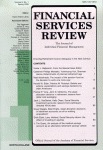How Investment Bankers Determine the Offer Price and Allocation of New Issues
DOI:
https://doi.org/10.1016/1057-0810(91)90014-PAbstract
The authors investigate how investment bankers use indications of interest from their client investors to price and allocate new issues. They model the process as an auction constructed to induce asymmetrically informed investors to reveal what they know to the underwriter. The analysis yields a number of empirical implications, including that new issues will be underpriced and that distributional priority will be given to an underwriter’s regular investors. The authors also find that tension between an underwriter’s propensity to presell an issue and an issuing firm’s desire to obtain maximum proceeds affects the type of underwriting contract chosen. Journal of Financial Economics, Vol. 24,No.2(October 1989),pp.343-361.(Reprinted withpermission of the Journal of Economic Literature.)
Published
How to Cite
Issue
Section
License
Copyright (c) 1991 JAI Press Inc.

This work is licensed under a Creative Commons Attribution-NonCommercial 4.0 International License.
Author(s) retain copyright and grant the Journal right of first publication with the work simultaneously licensed under a Creative Commons Attribution-NonCommercial 4.0 International License that allows to share the work with an acknowledgment of the work's authorship and initial publication in this Journal.
This license allows the author to remix, tweak, and build upon the original work non-commercially. The new work(s) must be non-commercial and acknowledge the original work.


